The Batman films have spanned the good, the bad, and the lumpy. In that order, we have seen Christopher Nolan’s respectable Dark Knight trilogy (2005, 2008, 2012), Joel Schumacher’s painfully unfunny throwbacks to the 1960s camp television series, Batman Forever (1995) and Batman & Robin (1997), and, earlier still, Tim Burton’s imaginative if not always narratively satisfying Batman (1989) and Batman Returns (1992). Most recently, there was The Batman (2022), a dull, dour reboot directed by Matt Reeves that verged on self-parody despite—or, more likely, because of—its relentlessly gritty realism, to coin a phrase. Of the “official” Batman films, and by that I’m referring to the theatrically released features produced by Warner Bros., the one you might not know is the greatest by a considerable margin: Batman: Mask of the Phantasm (henceforth Phantasm).
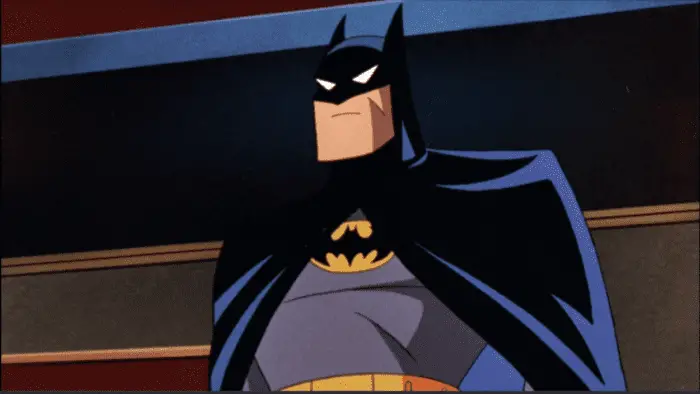
Released on Christmas of 1993, this Gothic, 76-minute animated feature bombed at the box-office, although received positive reviews and eventually found an audience on home video. In fact, the film was originally intended for the direct-to-video market, but Warner Bros. rushed it into theatrical release with a bare-bones marketing campaign. The quick change not only meant that the aspect ratio had to be altered to accommodate theater screens, but also that voice director Andrea Romano had to relinquish her professional title to comply with a guild rule stipulating that director credit on a feature was reserved for members of the Director’s Guild of America. Romano was instead credited with “voice supervision.” You’ll hear Kevin Conroy as Batman/Bruce Wayne, Dana Delany as Bruce’s ex-girlfriend Andrea Beaumont (a hat tip to Andrea Romano), Efrem Zimbalist Jr. (from ABC’s 77 Sunset Strip [1958-1964] and The F.B.I. [1965-1974]) as Bruce’s loyal butler Alfred, and Mark Hamill (yes, Luke Skywalker himself), nearly unrecognizable as Batman’s arch nemesis, the Joker. And a more definitive Batman or Joker you will not find among the many actors who have played these iconic characters.
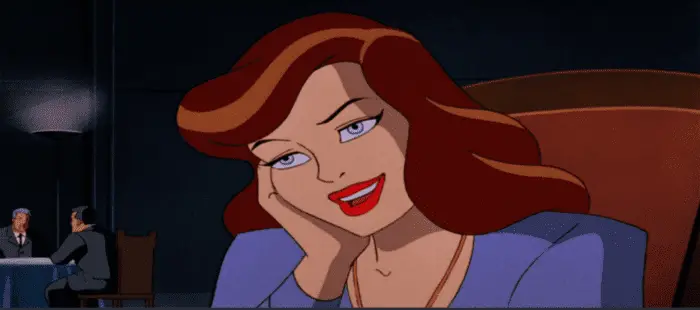
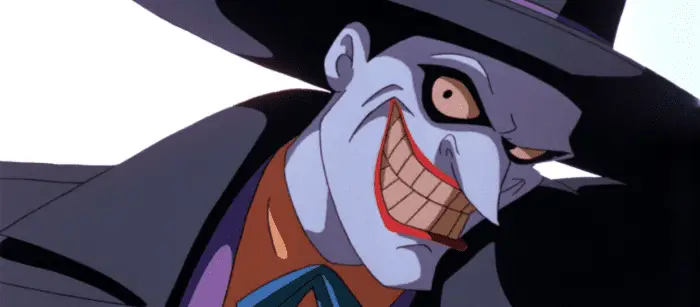
Phantasm was a spin-off of the Emmy-winning Batman: The Animated Series, created by Eric Radomski and Bruce Timm, who shared co-directing credit on the film. The series aired on Fox from 1992 to 1995 and launched the DC Animated Universe, or DCAU. Set in a shared story-world derived from DC Comics, the DCAU was a multi-media franchise that included the television series Superman: The Animated Series (The WB, 1996-2000), The New Batman Adventures (The WB, 1997-1999), Batman Beyond (The WB, 1999-2001), Justice League (Cartoon Network, 2001-2003), and Justice League Unlimited (Cartoon Network, 2004-2005), as well as the direct-to-video, feature-length films Batman & Mr. Freeze: SubZero (dir. Boyd Kirkland, 1998), Batman Beyond: Return of the Joker (dir. Curt Geda, 2000), and Batman: Mystery of the Batwoman (dir. Curt Geda, 2003).
Animation buffs will rightly observe the influence of Dave and Max Fleischer’s early-1940s Superman cartoons on Batman: The Animated Series, but series producer Alan Burnett suggests a wider sphere of influence with the term “Dark Deco” to characterize the decidedly retro style. Head writer Paul Dini has explained that Dark Deco supposes “the 1939 World’s Fair had gone on another sixty years or so, and the cool sense of design and stylishness from the Art Deco years was in operation well up until the ‘90s.” What’s more, the animated series was the first of its kind in which animators used light color on black paper, evoking the low-key lighting of film noir. Burnett and Dini, who both contributed to the screenplay for Phantasm, talk about “Dark Deco” in “Batman: The Legacy Continues Retrospective,” a special feature on the Blu-ray edition of the series, but I would also direct readers to Joe Sutliff Sanders’s analysis of streamlining as a design motif in his excellent TV Milestones volume.
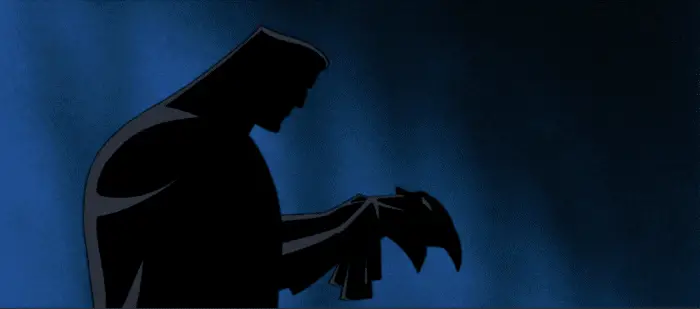
In addition to the “Dark Deco” look, Phantasm maintains continuity with its television source through its soundtrack. Conroy, Zimbalist, and Hamill all worked under Romano’s direction on the series (Bob Hastings and Robert Costanzo also reprise their roles as Commissioner Gordon and Detective Bullock, respectively). When the series’ musical composer Shirley Walker came aboard the film, she earned the distinction of being one of the first women to receive solo credit for composition on a Hollywood feature. Walker conducted Danny Elfman’s score for the 1989 Batman, and while her score for Phantasm was inspired by Elfman’s theme music that opened and closed each episode of the series, it resounds as a completely unique achievement and gives the film its strong dramatic backbone. (Trivia bit: Walker’s friend Hans Zimmer, who assisted her on the film’s score, went on to compose the music for Nolan’s Dark Knight trilogy.) The only false musical note is the love ballad by Tia Carrere, “I Never Even Told You,” that awkwardly sneaks up in the end credits.
For all of these aesthetic connections between the film and the series, Phantasm tells a stand-alone story and does not depend on narrative information gathered from paratexts—a rarity in comic-book films these days. It’s an old-fashioned mystery, with Batman in detective-mode investigating the murders of Gotham City crime bosses just as Andrea Beaumont returns to town and reenters Bruce Wayne’s life. The murders seem to implicate the caped crusader, but are actually committed by a new vigilante (voiced by Stacy Keach), who conceals their identity under a Grim Reaper costume. As the City Councilor Arthur Reeves (voiced by Hart Bochner) leads a public campaign against Batman, he also attempts to make a play for Andrea. Meanwhile, the Joker begins an investigation of his own for reasons that are later made clear. Character actors Dick Miller, John P. Ryan, and Abe Vigoda lend their gravelly voices to the targeted gangsters, rounding out the exceptionally capable ensemble.
The classic Batman themes are here: the trauma of childhood loss, the line between seeking social justice and personal vengeance, and the self as a composite of different roles we perform—as any Batman fan knows, billionaire-playboy Bruce Wayne is the real “costume.” What Phantasm does better than any other Batman film, though, is get at the root of what makes the character fundamentally alienated: not his noble, all-consuming efforts to fulfill his promise to his murdered parents, but his guilt over actually wanting to overcome his grief. The most devastating scene in the film is the flashback that shows a younger Bruce visiting his parents’ gravesite in the rain and pleading for “it to be different now.” Kneeling in front of their tombstone, he tearfully confesses, “It doesn’t mean I don’t care. I don’t want to let you down, honest, but…it just doesn’t hurt so bad anymore.” Bruce has not yet become Batman and is ready to follow a different path by proposing to Andrea. “I know I made a promise,” he says, “but I didn’t see this coming. I didn’t count on being happy. Please, tell me that it’s okay.”
Andrea, too, will suffer her own trauma that will make it impossible for her to be with Bruce. At the risk of spoiling the twists in the plot, let it simply be said that the film is as much a love story as a detective story, and it is the rare Batman film to devote equal attention to his romantic partner. The relationship between Bruce and Andrea develops in flashbacks, and the film poignantly uses the setting of the Gotham City World of the Future Fair (unmistakably modeled after the 1939 New York World’s Fair) as an objective correlative for their tragic romance. Bruce takes Andrea on a date to the fair, and as they eagerly proceed to explore the various pavilions and expos, an announcer assures them of “a dream of the future, a bright tomorrow filled with hope and promise for all mankind. This is a vision of a shimmering utopia, where we shall all spend the rest of our lives.” The present-day timeline in the film reveals that the World of the Future Fair stands only in ruins, and in a grotesque parody of the retro-futurist domestic ideal, the Joker has converted the House of the Future into his hideout.
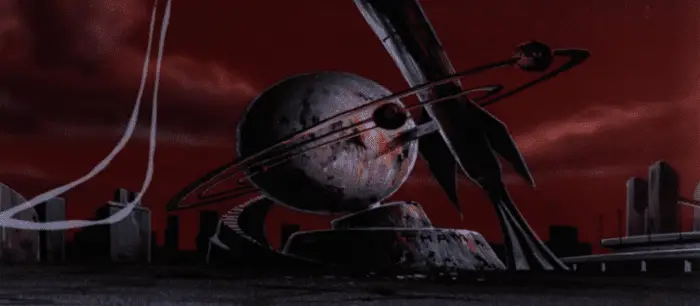

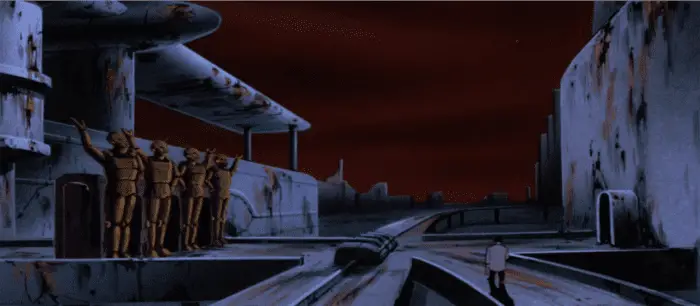

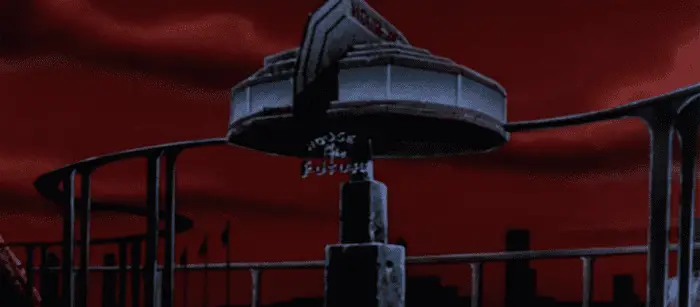
The return to the World of the Future Fair is like a visit from the Ghost of Gotham’s Future Passed, and considering how the Joker compares the Masked Phantasm to “The Ghost of Christmas Future” (not to mention the film’s original Christmas release), that Dickensian analogy may have been intended. Batman’s final confrontation with the Joker on the backdrop of the crumbling fairgrounds is not merely a requisite action sequence for the climax of a superhero movie, but a moment with real emotional stakes and implications for the principal characters. There is no Tiny Tim restoring our hope in a bright tomorrow. Only the passage of time and the consequences of our decisions that remain irreversible.




